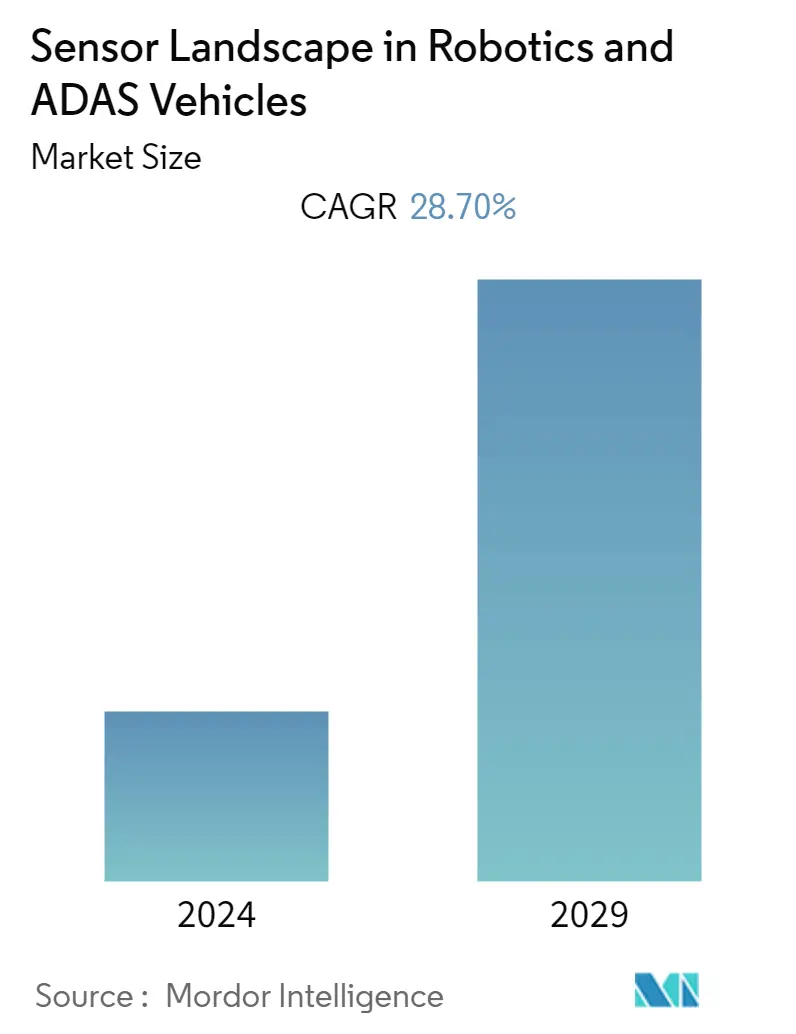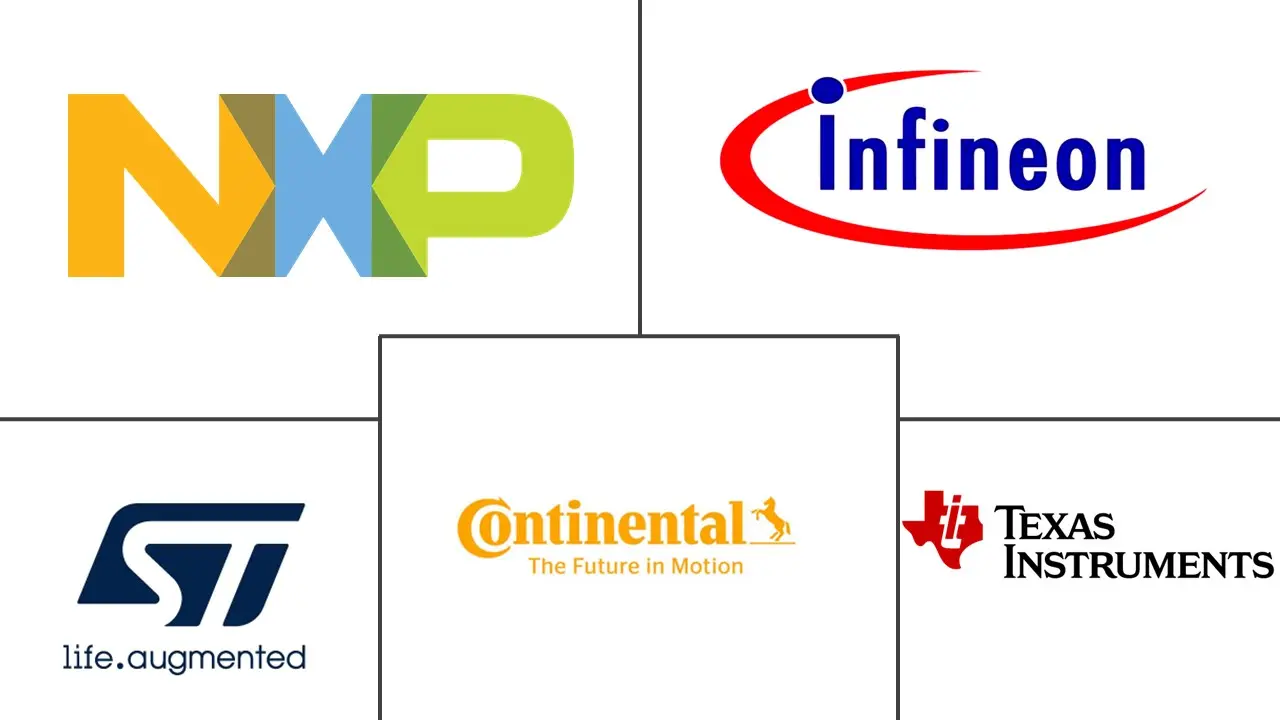Market Size of Sensor Landscape in Robotics and ADAS Vehicles

| Study Period | 2019 - 2029 |
| Base Year For Estimation | 2023 |
| CAGR | 28.70 % |
| Fastest Growing Market | Asia Pacific |
| Largest Market | North America |
| Market Concentration | Low |
Major Players
*Disclaimer: Major Players sorted in no particular order |
Need a report that reflects how COVID-19 has impacted this market and its growth?
Sensor Landscape in Robotics and ADAS Vehicles Market Analysis
The sensor landscape in robotic and ADAS vehicles is expected to reach a CAGR of 28.7% during the forecast period (2020 - 2025). An increasing adoption rate of ADAS and AD will be responsible for an overall expected growth rate of 8 percent in automotive sensors. The global market for advanced driver assistance systems, known in the industry as ADAS, is expected to reach more than $67 billion by 2025, growing more than 10 percent each year.
- Also, the increasing research and development activities to roll out fully autonomous cars require sensing technologies that are of great importance to enable 360-degree safety around the vehicle. Companies such as Google and Uber are already working on fully automated robotic cars.
- The Radar Sensor market has never been so dynamic, this market period of rapid technological innovation. New opportunities for radar are still emerging with, for instance, vital-sign driver monitoring systems, chassis-to-ground monitoring, and hands-free trunk opening. The industry is now envisioning radar imaging as a possibility. There's no doubt this technology will be critical in autonomous and robotic cars, ad aviation. For instance, in 2019, Velodyne launched Alphapuck at the Symposium event in Orlando. It is a lidar sensor specifically made for autonomous driving and advanced vehicle safety at highway speeds. It delivers a combination of long-range high resolution and wide field of view.
- Government mandates to install technology such as collision avoiding automatic brake systems are driving the market. Similarly, the emphasis of government to lower vehicle emissions will need cars and other commercial vehicles to be more fuel-efficient, resulting in the growth of pressure sensors. The Chinese government, for example, will introduce the new "6A" emission standard by 2020 to further lower vehicle emissions.
- With the recent outbreak of COVID 19, the Automotive sensor is witnessing a decline in growth due to major automotive manufacturing plants that have entirely stopped their production in response to lockdown being enforced by many countries across the world. Moreover, the self-driving vehicle has taken a hit, and the arrival of autonomous driving tech will be slowed, probably one to two years, because of the recent drastic downturn in auto sales and production due to COVID-19. For instance, Ford delayed its autonomous vehicle production until 2022 to rethink its strategy after the COVID-19 impact.
